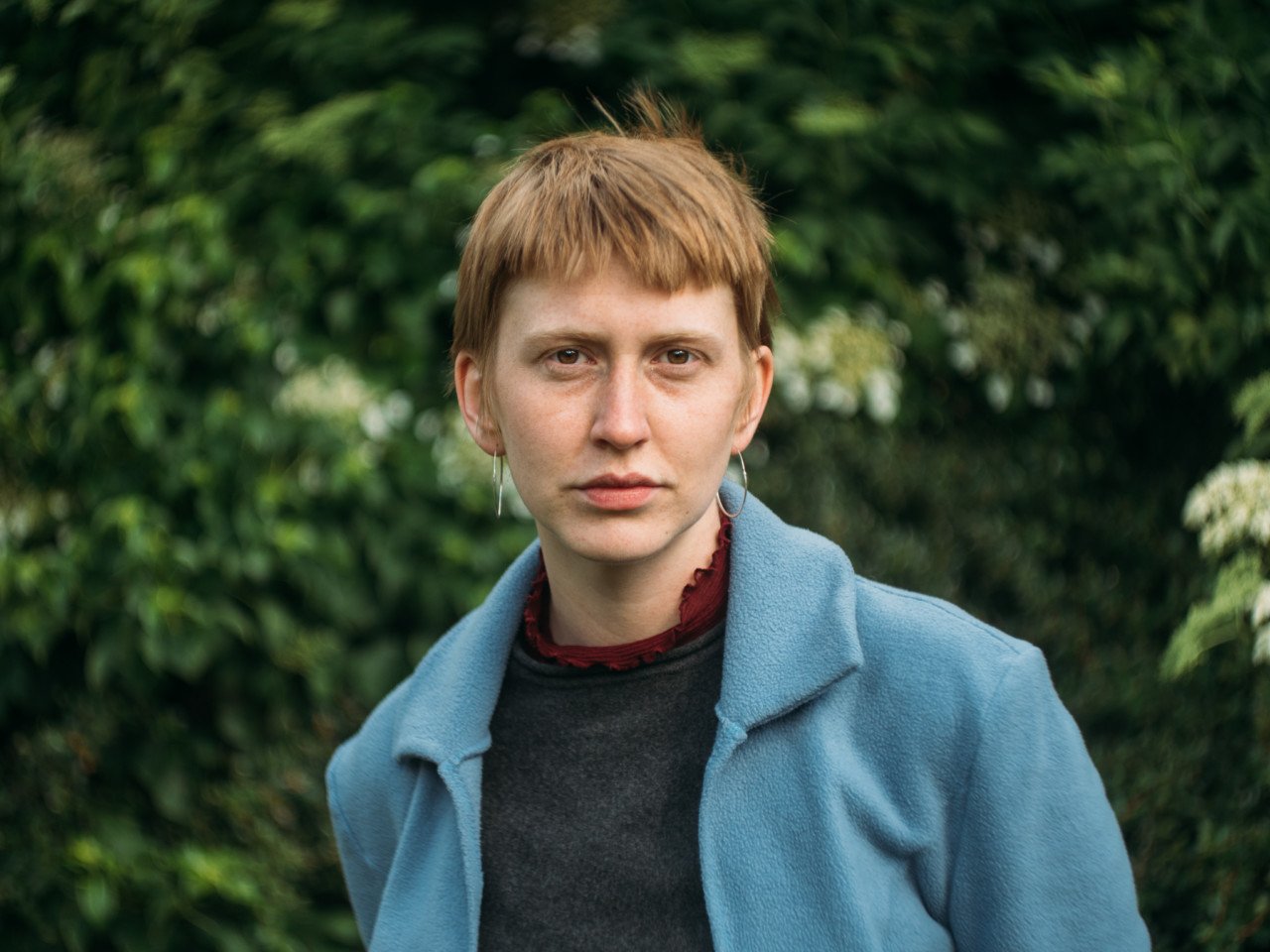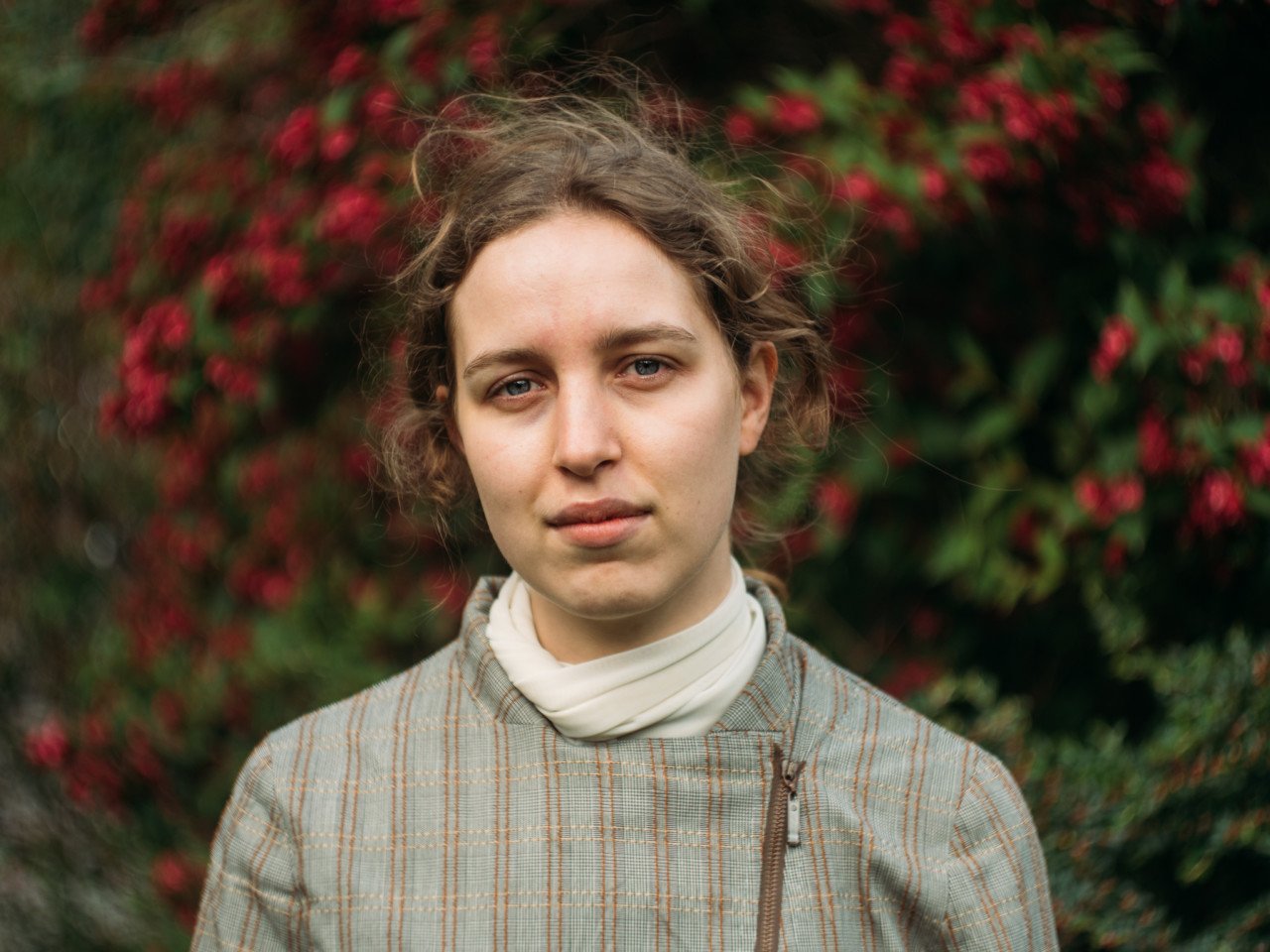Universitetsavisen
Nørregade 10
1165 København K
Tlf: 35 32 28 98 (mon-thurs)
E-mail: uni-avis@adm.ku.dk
—
Campus
Art — A group of art students have filled up the courtyard at CSS with installation art. They want to bridge the gap between art and the university. But how do the students and staff react to the works of art?
“Sorry, but I can’t get the image of a trash can out of my head.”
“Don’t be sorry, I’ve actually found cigarette butts in it a couple of times over the last few weeks. You’re not the only one.”
The first remark is from Heidi, who is a UCPH employee. The response is from Anna Munk.
She stands behind the artwork ‘Empirical study of a mermaid’. Heidi and her are in the garden of the old hospital that is now the Faculty of Social Sciences, CSS, and look upon it together.
Perhaps the students need a good laugh over a knitted mermaid after a long day in the reading room
Art academy student Anna Munk
The artist looks curiously at Heidi, who is struggling to put words on the knitted mermaid tail, which is held up by narrow copper columns. Anna Munk helps us a bit and describes her abstract work as “a study of a material sensation”.
“We know the knitted material, which we often wear. Here it is mixed with a spirit of fantasy and a world of imagination and fairy tales that is far from what we can wear. These are the themes that I was preoccupied with when I knitted this mermaid tail,” says Anna Munk.
She is studying at the Royal Danish Academy of Fine Arts, and with
The Empirical Study of a mermaid, Lera’s Harvest and The Little Match Girl are three of the works that the art collective has installed in the old courtyard.
The University Post took a photographer with us to immortalize the works
Abstract installation art and CSS, the old municipal hospital, make up an odd couple this sluggish afternoon.
In the yard there are a number of young students reading up on their exams. Others are taking a break from their dissertation with a beer in the sun. No passers-by immediately stop and look at the art. Perhaps the students at the Faculty of Social Sciences care too much about their top grades to immerse themselves in five abstract works of art?
For fear of the art of CSS ending up like the ‘
The art has not been
“We are confident that the students stop and look at this as art. We have exhibited at a place where you usually find old busts and statues, but not modern art. It breaks with the courtyard’s usual expression, and so hopefully it starts some thoughts,” says Olga Kristine Stage.
She has contributed with the work of Lera’s Harvest, which will soon be tested in a meeting with two passers-by, exchange students.
Why have you chosen to use the university as your exhibition room?
“Art should not only be for the initiates of the Academy of Fine Arts. I think art can create an intimate space. And make us reflect on a lot of things. We no longer think of artworks as something in a white room. Art is something that can also meet us in different places and in other circumstances than at the museum. And it is also important that students at CSS can experience it,” says Anna Munk.
She knows how art can contribute to everyday life. And she hopes that the CSS students have had the same feeling over the past two weeks.
What a classy university!
Lukas, German exchange student of economics, had a hard time controlling his enthusiasm over the CSS installation art
“You get joy and energy from dealing with things that are made with care and sensitivity. My hope is that you can break up people’s everyday lives a little. Perhaps the students need a good laugh over a knitted mermaid after a long day in the reading room” she says.
Do you think they are ready to appreciate this kind of art?
“Yes,” says Olga Kristine Stage.
“No matter whether you go to the art academy or study at CSS, many of the thoughts and subjects that we find interesting are alike. It’s a shame that art and academia are always perceived as two different worlds, because they can easily have a lot in common. And we’d like to show that. We just convey our interests and thoughts in a physical work of art, while university students write an assignment,” says Olga Kristina Stage.
At the opening a few weeks ago, the art academy students were overwhelmed by the CSS people’s positive response.
“But we did also have beer and shared them out for free,” laughs Anna Munk, before we take a round and let the artists explain their works.
The premise is simple: Once the artists have explained the ideas behind the work, we ask a random passer-by to describe the art.
Anna Munk says: “It’s not about The Little Mermaid, but it still draws on some of the imagery that the fairy tale sets off within us. I want to set off thoughts by mixing the knitting with a creature that lives in our imagination. And then, apart from this, I’ve really wanted to knit a mermaid tail for quite some time.”
Why do you call it ‘an empirical study’?
“In the academic field you find empirical evidence, form an impression, and create new knowledge. Somehow, the process is repeated here. I think of a mermaid, form an impression of what it looks like, and put it together in a new and different way.
“Well then. Time to get a passer-by to take a look. We meet Heidi, who is normally employed at South Campus, but who is today taking care of an administration meeting at CSS.
“The mermaid is nice,” she exclaims.
“But I cannot get the image of a trash can out of my head,” she says, nodding towards a bin 20 metres away. And it does, indeed, have certain features in common with ‘Empirical examination of a mermaid’. Anna Munk comes to Heidi’s rescue and says that she is not the first to make that comparison.
“Don’t be sorry,” she says.
After the trash can analogy, Heidi speaks up again.
“I like that it portrays a mermaid. There is something different and exciting about it. Something imaginative. Just like when you look down on ‘The Little Mermaid’ on Langelinie harbour front,” she says, taking a half-minute break to observe.
“But whatever else it should mean, I really do not know,” says Heidi.
She might find it difficult to decode the work, but she is pleased that the art can break with the otherwise dull décor of UCPH.
“KUA is pure concrete and glass, so we really need some art on the walls,” says Heidi.
Before she moves on, Anna Munk emphasises that she should not think too much about the trash can comparison.
“In one way, I reckon it’s okay that some people think it is. Then the work is at least integrated into the surroundings,” she laughs.
What do we see here?
“It’s a ceramic dish of clay that I have glazed and put in the oven. And then I’ve combed it with a comb, just like when you comb your hair,” says Olga Kristine Stage, the creator of the work.
That sounds strange. Try to explain to us a little bit more about the idea behind this.

And what about the two clay pieces with attached hair clips?
“The basic idea is the same. To explore and treat objects like people treat themselves. That’s why the work is called Lera’s Harvest. ‘Lera’ is a feminine of Ler (Danish ‘clay’, ed.) and I want to put a feminine expression on the material,” she says.
OK. And what about the silver bars they are lying on?
“They help lift them off the ground. I could have also placed the works at a height of one and a half meters, but I feel that they have more fragility if there is a real risk that you step on them.”
What do the students say to Lera’s Harvest?
While Olga Kristine Stage completes her description of the work, two exchange students pass by. Magnus is from Oslo and studies psychology. His companion is Luke, a German who studies economics. They nod in recognition of Lera’s Harvest and wrinkle their brows.
I feel that they have more fragility if there is a real risk that you step on them.
Fine arts academy student Olga Kristine Stage
“This is the hardest of them all to decode,” says Lukas. So you’ve seen the works before?
“Yes, all of them. And thought about them. But this one I’ve had difficulty understanding. But I like it. I’m actually a big fan of the new art here in the yard. What a classy university we go to,” says Lukas, continuing.
“To return to the work: There is a kind of medieval atmosphere over it, especially with the brown colour. The plate on the right reminds me of a large sponge in the forest,” he says, pointing to the flat clay disc.
“Yes, and on the left it looks like two big flies. There seems to be a nature theme in the two pieces of clay. A sponge and something with some flies. It also fits well into the environment. We are, after all, in some kind of garden,” Magnus adds.

Olga Kristine Stage is listening, smiling, and thanking the two exchange students for the chat. The it about women’s feminine representation was a little bit lost on them – but they had thought of the art several times, and that is the most important thing for her:
“There is no fixed interpretation of the significance of the works,” she says.
We finish off with Søren Frederik Petersen’s The little match girl. A square welded in iron, which winds in different directions.
“It can be difficult to believe, but this is what the little match girl looks like in my head,” says Søren Frederik Petersen of the work with the title by the H.C. Andersen fairy tale.
“Nobody will immediately think along the same lanes. Only if they see the name at the same time.”
What is your intention with this work?
“I wanted to create something raw. Something honest. This garden is wildly beautiful and idyllic. I wanted to give the garden a different expression, so I started welding this work,” says Søren Frederik Petersen.
And then on to the students’ ruling. The first passer-by is an Asian exchange student. She has a really hard time understanding the work – especially when we explain to her that it has something to do with a H.C. Andersen story. So we try two dissertation-writing, political science students, Jens-Ole and Mads Christian.
To be quite honest, a couple of days passed by before I realized that this was art
Mads Christian, writing his dissertation at the Department of Political Science
“Damn, while the artist is watching? This is like being at a visual arts exam,” says Mads Christian – then gives it a try anyway: “They have being playing with the forms, I can see that much. It’s a bit dark and hard, a bit sad. So maybe that’s why the little girl is called the little match girl?”
Jens-Ole plays along with him:
“It reminds me a little bit of the toys there always are at the doctor’s. A metal rod with a wooden sphere that can move along the rod. But from there to H.C. Andersen – uh… this is more difficult” says Jens-Ole.
Both agree that CSS needed a bit of an art ‘quickie’.

The two political science students say thanks for the chat and sneak off. We have finished the art show this time round. Olga Kristine Stage, Anna Munk and Søren Frederik Petersen get ready to have their works taken down the following day. It has been good to exhibit at CSS, they say.
“The worst thing would be if people reckoned it just did not matter and just passed by. As long as people of my own age stop and think about it, it has been a good experience,” says Anna Munk.


